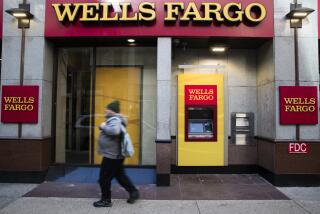A Word to the Rise Regarding Dividends
- Share via
If you’re looking for stock mutual funds to throw off large dividends these days, you’re likely to be disappointed. But if you hope your fund manager can capture dividend increases, that’s another story.
Despite chronically low yields in the stock market, the number of companies raising their dividends is growing, providing fund managers with expanded investment choices. Nearly 2,200 corporations boosted their payouts in 1996--the largest yearly tally since 1980, says researcher Standard & Poor’s Corp. in New York. By contrast, only 130 firms cut or eliminated their dividends.
For income-seeking investors, a change of priorities might be in order. Rather than fret over dividend yields that in general have been falling, you might prefer to seek stock funds whose managers invest in companies able to elevate their payouts.
A strategy built around dividend hikes makes sense if you hope to spot financially sound corporations. Companies rarely boost dividends unless business conditions are solid and improving. A rising payout often corresponds to enhanced profitability.
“Stock prices follow earnings and dividends over time,” says Bill Stromberg, who runs the T. Rowe Price Dividend Growth Fund in Baltimore.
And while many corporations are choosing to reinvest their profits or repurchase stock to enhance shareholder values, paying a higher dividend over time can do the same.
“Many companies recognize that business is good, profits and cash flow are up, and one way to share this with stockholders is to increase the dividend,” says Howard Kornblue, manager of the Pilgrim America Magna Cap Fund in Phoenix.
By investing in a fund that seeks out companies posting dividend increases, your investment could prove less risky than a competing portfolio that focuses on buying the highest-yielding stocks it can find.
Fund managers who focus on the highest-yielding stocks often must concentrate in a small number of industries, which could result in their becoming under-diversified.
Just as some growth mutual funds have concentrated their assets in high-flying technology stocks, some yield-oriented portfolios might focus on utility and real estate companies.
Another peril is that a firm’s fat dividend could be thrashed, especially if it exceeds market averages.
“A lot of electric utilities have cut their dividends over the past five years, although prior to that time nobody saw this happening,” says Tom Rath, who runs the Safeco Income Fund in Seattle. “People are better off owning stocks with [modest] yields and good dividend-growth prospects, rather than simply trying to find the highest yields around.”
Some of Rath’s favorite dividend-increasing stocks include General Electric, Fannie Mae and Minnesota Mining & Manufacturing among blue chips, along with Landauer and American List among smaller firms. Stromberg’s favorites include Newell and Tupperware, while Kornblue likes Automatic Data Processing, Hershey Foods and Sara Lee, among others.
For the most part, rising-dividend funds earmark large U.S. blue-chip companies--the types of firms most likely to pay dividends. But some also have stakes in a sampling of medium and small corporations, along with a handful of foreign multinationals. Kornblue, for instance, likes French energy company Elf Aquitaine. Stromberg says his foreign holdings, at about 12% of the fund’s assets, are as high as they have ever been, underscoring what he feels are better values in international stock markets.
A mutual fund strategy built around rising dividends can also make sense for people who might be tempted to seek bond income instead. While bond mutual funds typically throw off higher yields than stock portfolios, the latter enjoy an edge when it comes to inflation protection.
That’s because a stock’s dividends can be expected to rise over time, while a conventional bond’s interest payments stay flat. For example, a $100,000 stake in the Standard & Poor’s 500 index in 1975 would have generated slightly more dividend income over the subsequent 20 years than a similar investment in the Lehman Government/Corporate Bond index, reports T. Rowe Price, even though the bonds’ interest payments initially were higher. And, of course, the stocks’ principal values would have increased much more.
Stock dividends have grown at a 6.9% compounded annual rate over the last 20 years, thereby outpacing inflation, which has risen at a 5.1% yearly clip. Dividends jumped by 8% in 1996, nearly double the rate in 1995, and further improvement could be in store.
“Payout rates are so low that companies have a lot of room to pay higher dividends,” Stromberg says.
Here’s one key point to remember about stock funds that invest in companies paying higher dividends: Their yields tend not to be excessive.
Many offer payouts closer to the 2% average yield on stocks in the S&P; 500 than to the 5% to 6% rates available on selected real estate and utility funds.
More to Read
Inside the business of entertainment
The Wide Shot brings you news, analysis and insights on everything from streaming wars to production — and what it all means for the future.
You may occasionally receive promotional content from the Los Angeles Times.








